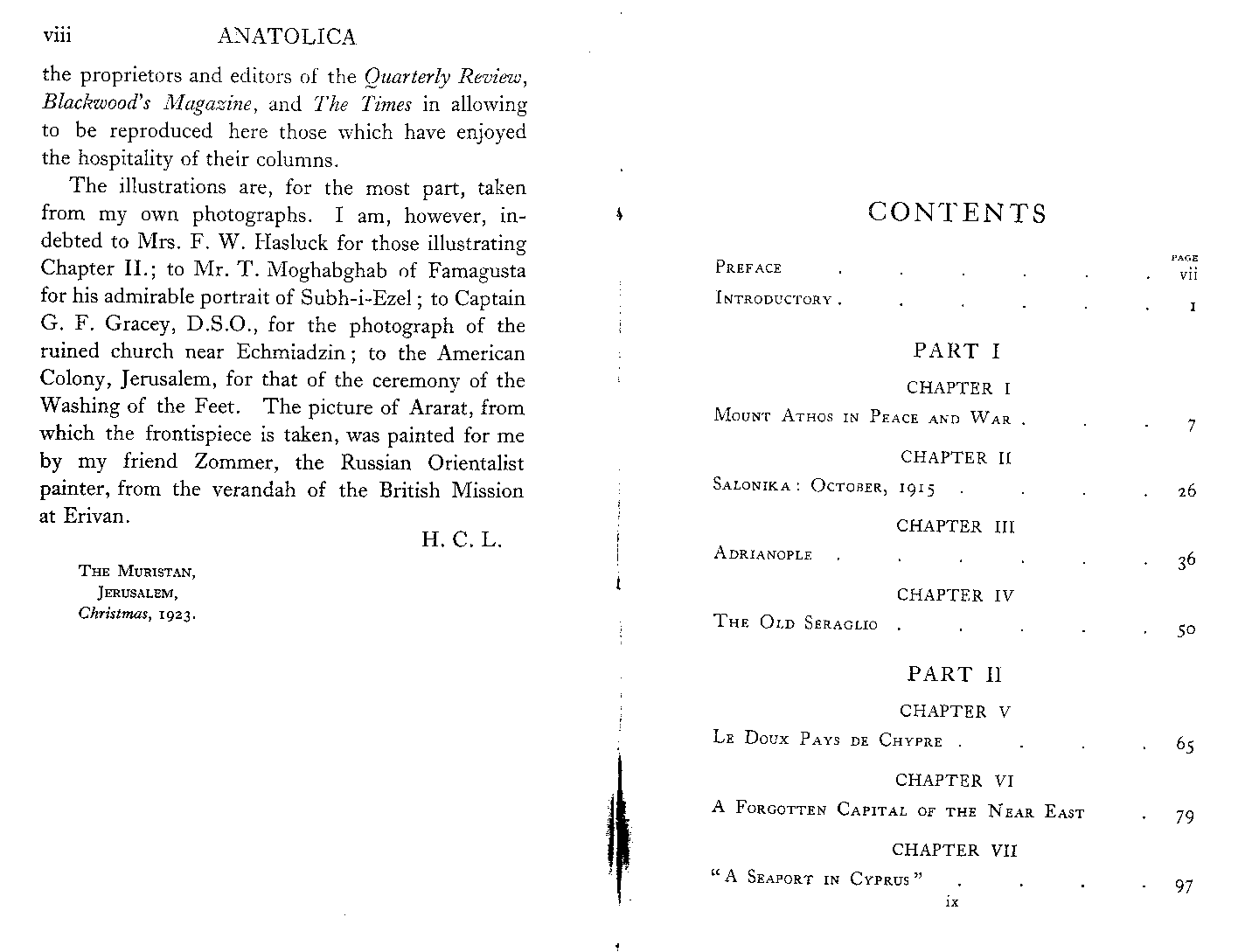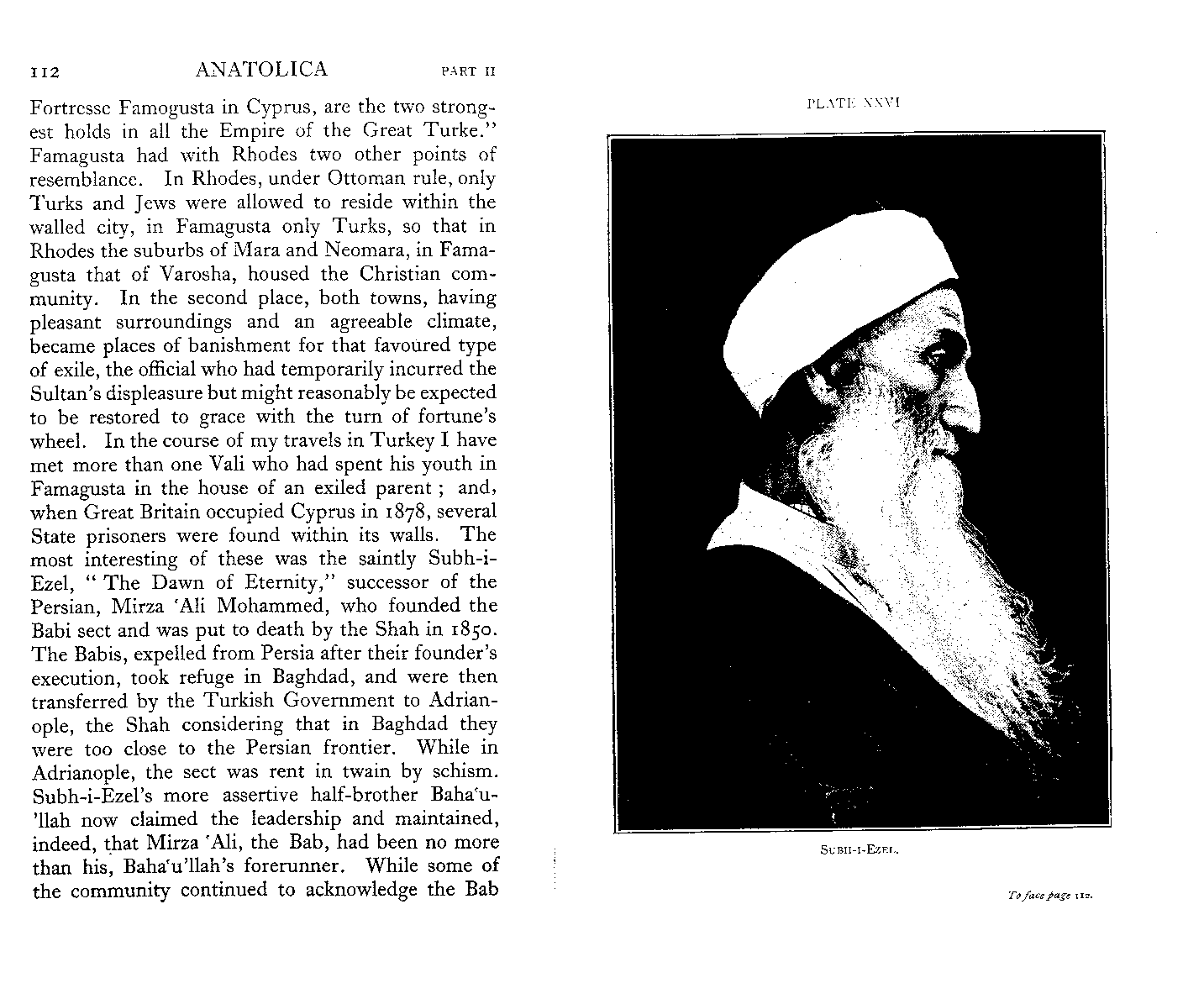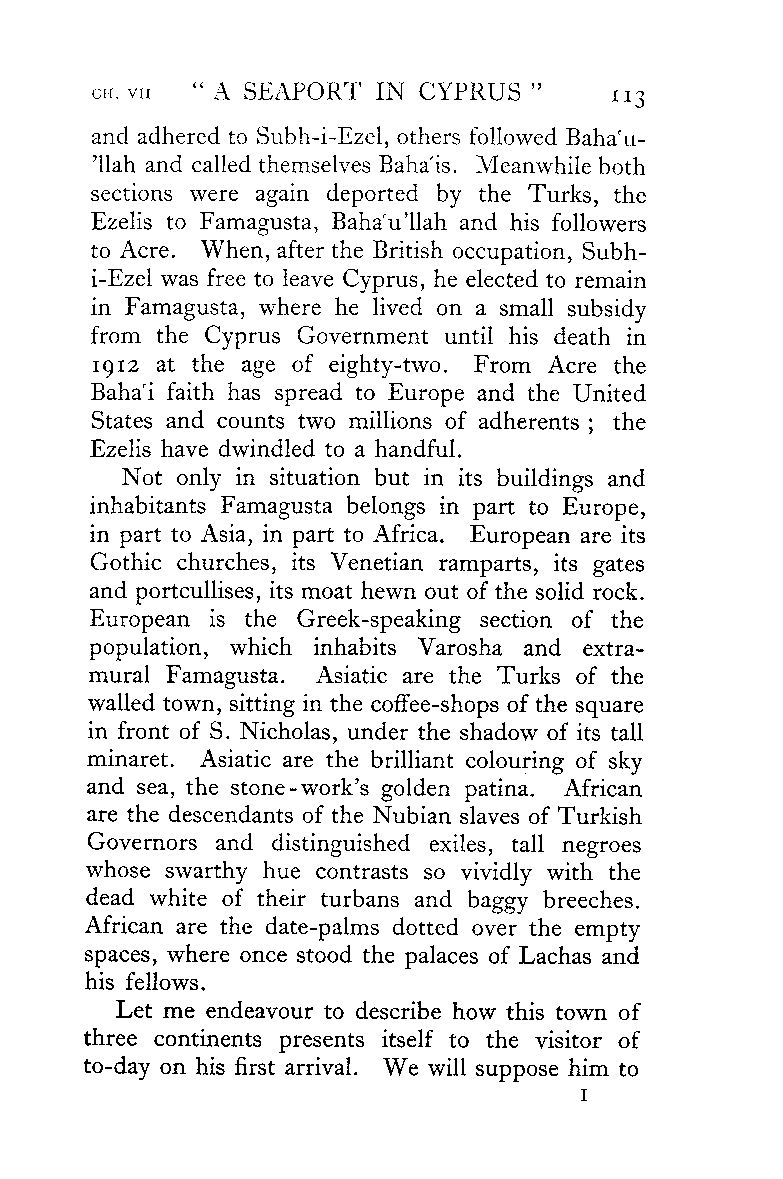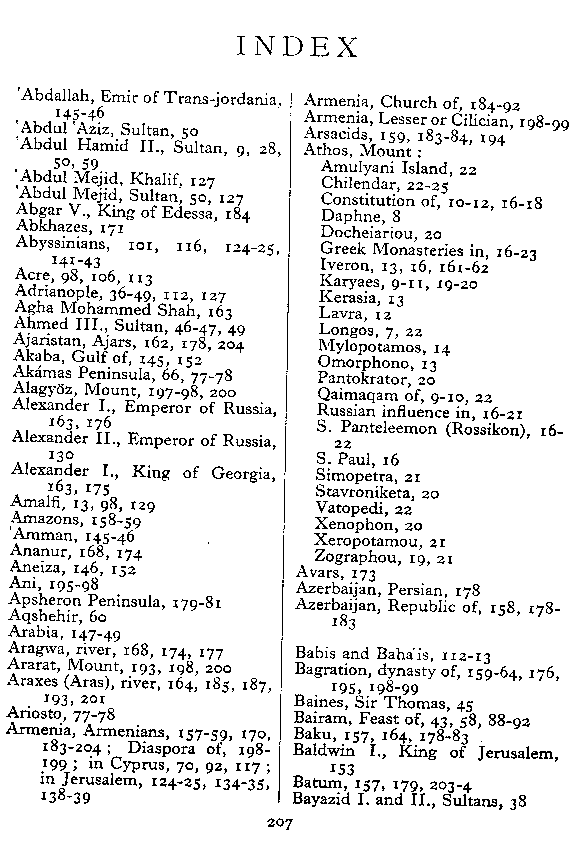
|
|
Abstract: One-page discussion of Mirza Yahya, Subh-i-Azal. Notes: Author's name is also given, in places, as "Harry Charles Lukach." |
Anatolica
by Harry Charles Luke
published in Anatolica, pages 112-113London: Macmillan and Company, 1924
1. Text
[page 112]... In the course of my travels in Turkey I have met more than one Vali who had spent his youth in Famagusta in the house of an exiled parent; and, when Great Britain occupied Cyprus in 1878, several State prisoners were found within its walls. The most interesting of these was the saintly Subh-i-Ezel, "The Dawn of Eternity," successor of the Persian, Mirza 'Ali Mohammed, who founded the Babi sect and was put to death by the Shah in 1850. The Babis, expelled from Persia after their founder's execution, took refuge in Baghdad, and were then transferred by the Turkish Government to Adrianople, the Shah considering that in Baghdad they were too close to the Persian frontier. While in Adrianople, the sect was rent in twain by schism. Subh-i-Ezel's more assertive half-brother Bahá'u'lláh now claimed the leadership and maintained, indeed, that Mirza 'Ali, the Bab, had been no more than his, Bahá'u'lláh's forerunner. While some of the community continued to acknowledge the Bab
[page 113]
and adhered to Subh-i-Ezel, others followed Bahá'u'lláh and called themselves Bahá'ís. Meanwhile both sections were again deported by the Turks, the Ezelis to Famagusta, Bahá'u'lláh and his followers to Acre. When, after the British occupation, Subh-i-Ezel was free to leave Cyprus, he elected to remain in Famagusta, where he lived on a small subsidy from the Cyprus Government until his death in 1912 at the age of eighty-two. From Acre the Bahá'í faith has spread to Europe and the United States and counts two millions of adherents; the Ezelis have dwindled to a handful. ...
2. Image scans (click image for full-size version)

|
|



